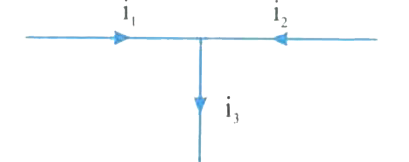Out of the following function reporesenting motion of a particle which represent SHM
(i) y=sinωt−cosωt
(ii) y=sin3ωt
(iii)y=5cos(3π4−3ωt)
(iv) y=1+ωt+ω2t2
A
Only (a) and (b)
B
Only (a)
C
Only (d) does not represent SHM
D
Only (a) and (c)
Video Solution
Text Solution
The correct Answer is:D
For SHM, necessary condition a∝−y
(b) y=sin3ωt=4sin3ωt4=3sinωt−sinωt4
v=dydt=3cosωt⋅ω−cos3ωt⋅3ω4
a=dvdt=d2ydt=−3ω2sinωt+9ω2sin3ωt4
=(3sinωt+9sinωt4)
a≠−ω2y No SHM
(d) y=1+ωt+ω2t2
v=dydt=ω+2ω2t
a=dvdt=2ω2=aconstant
a≠−ω2y, No SHM
|
Topper's Solved these Questions
Similar Questions
Knowledge Check
Out of the following functions representing motion of a particle which represents SHM :
(A) y=sinωt−cosωt
(B) y=sin3ωt
(C ) y=5cos(3π4−3ωt)
(D) y=1+ωt+ω2t2AOnly (A) and (B)BOnly (A)COnly (D) does not represent SHMDOnly (A) and (C )Out of the following functions representing motion of a particle which represents SHM
I. y=sinωt−cosωt
II. y=sin3ωt
III. y=5cos(3π4−3ωt)
IV. y=1+ωt+ω2t2AOnly IV does not represent SHMBI and IIICI and IIDOnly IPosition of a particle varies as y=cos2ωt−sin2ωt. It is
Aharmonic but not SHMBSHM with period (πω)CSHM with period (2πω)Dperiodic with period (πω) but not SHM.
The r.m.s. value of I=I1sinωt+I2cosωt is
View SolutionThe motion of a particle is given by x=Asinωt+Bcosωt. The motion of the particle is
View SolutionThe motion of a particle is given by
y=asinωt+bsinωt
The motion of the particle is
View SolutionFour functions given below descirbe motion of a particle.
(I)y=sinω−cosωt,(II)y=sin3ωt,
(III) y=5cos(3π4−3ωt),(IV)y=1+ω+ω2t2
Therefore, simple harmonic motion is represented by
View SolutionThe displacement of a particle varies with time according to the relation y=asinωt+bcosωt.
View Solution
